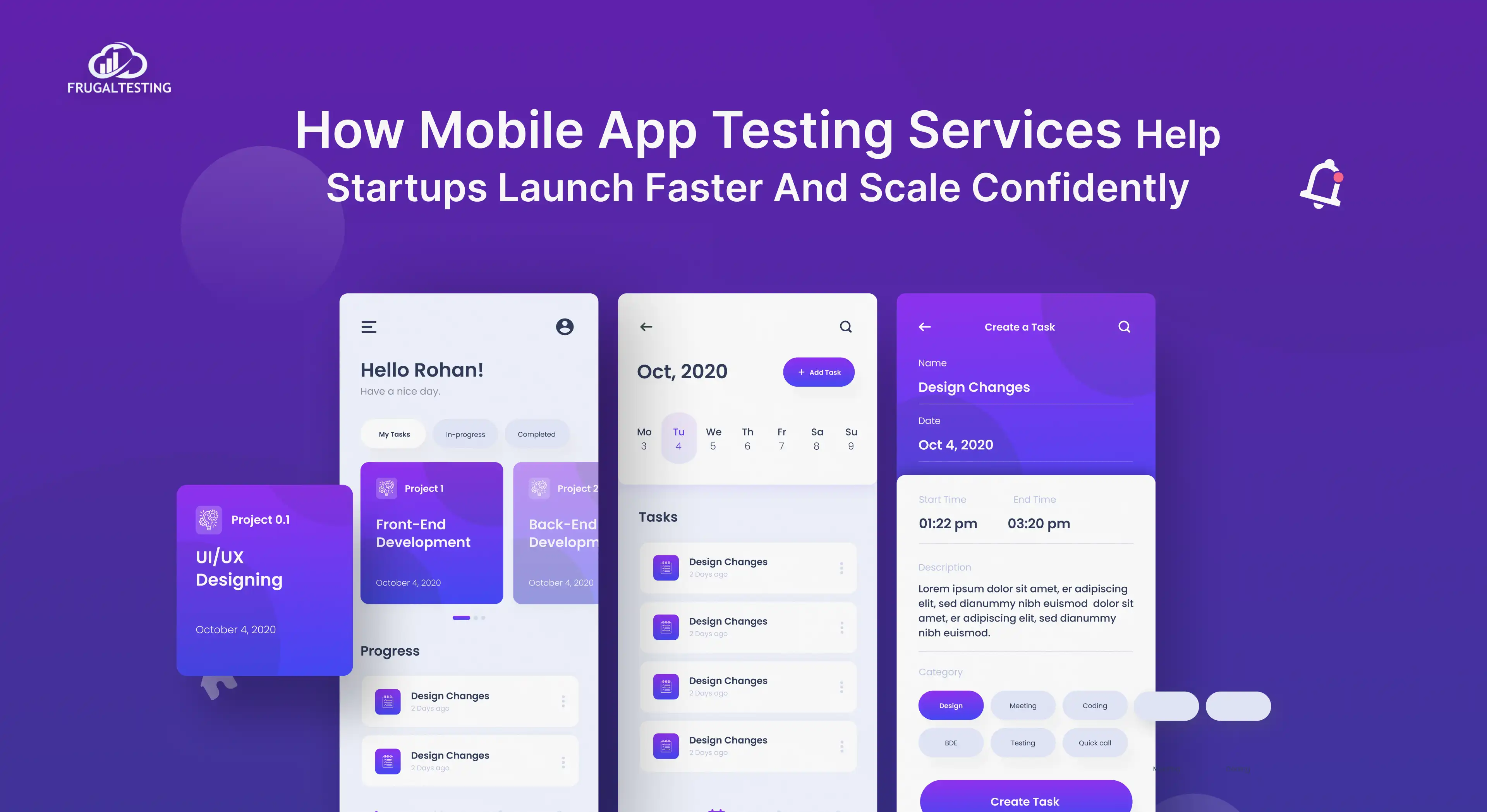Performance testing 🔍 isn't just a task; it's your gateway to stellar software performance.
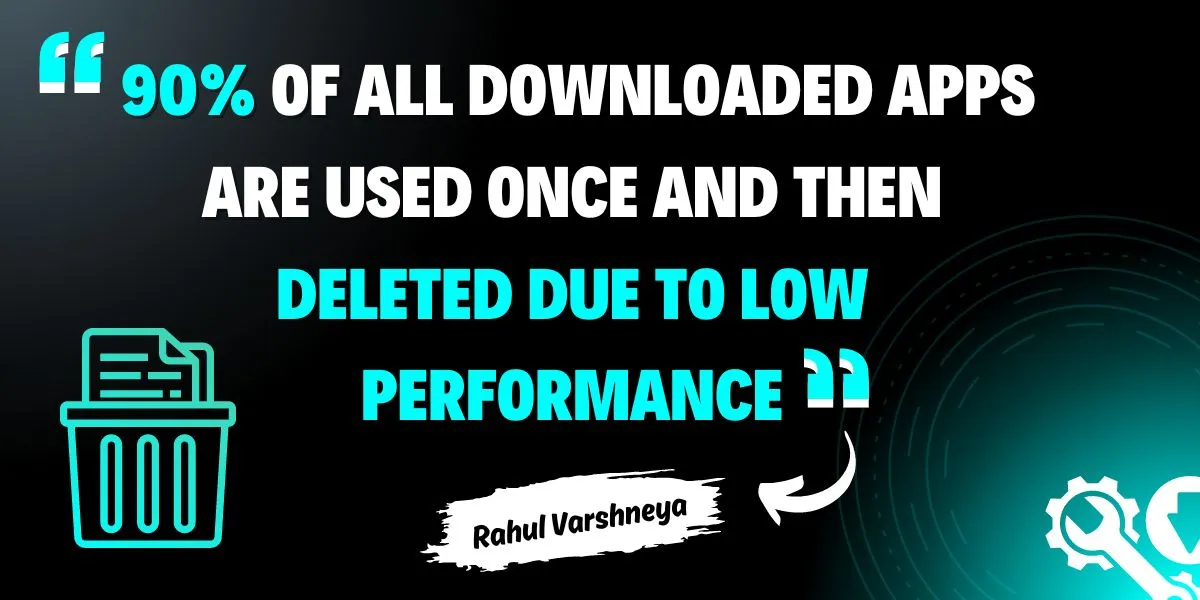
In this blog, I'll unravel the what, how, and why of performance testing, ensuring you're equipped for 2024 and beyond.
🌟Are you curious about what is performance testing? It's more than just a buzzword.
🌟Have you ever wondered how to do performance testing? I've got you covered with step-by-step guidance.
🌟Dive into the types of performance testing with me. It's offering insights that could change the game for your applications. 🌈
🌟Why performance testing is important might seem obvious, but many overlook its benefits.
🌟Load testing differs from performance testing, and understanding the distinction is crucial for targeted optimizations. I'll break it down, making it crystal clear.. 💡
🌟Discover the top 7 benefits of performance testing that you absolutely must recognize. It's not just about speed but sustainability, scalability, and satisfaction.
🌟Finally, gain insight into the best performance testing frameworks of 2024. These aren't just tools; they're your allies in ensuring your applications survive and thrive.

What is Performance Testing?
It's the backbone of software excellence, ensuring your applications run smoothly under any conditions.
Performance testing is not just about speed; it's about delivering a seamless user experience. 🚀 It's crucial to identify bottlenecks before they become problems.

But how to do performance testing? It starts with simulating real-world scenarios to understand how your application behaves under stress. 🌍
Several types of performance testing - from OTT load testing to stress testing, each serving a unique purpose. 📊 Understanding these can transform your approach to the software development lifecycle.
Why is performance testing important?
Because it's the difference between a satisfied user and a frustrated one. 🙌 It's about ensuring your software can handle the heat.
The objective of performance testing goes beyond finding flaws. It's about enhancing user satisfaction, improving reliability, and ensuring stability. 🔧

Is Performance Testing the Key to Boost Your Software Performance?
Performance testing is the key to boosting your software's performance. Ignoring it is like driving with your eyes closed. 🚗
Through performance engineering, you're not just checking boxes; you're building a foundation for success. It's an investment in your product's future. 💡
In a world where patience is thin, ensuring your application performs under pressure is not optional; it's essential. 🌎
Remember, in the digital age, performance requirements are not just an expectation; it's a demand. Meet it with rigorous performance testing. 🎯
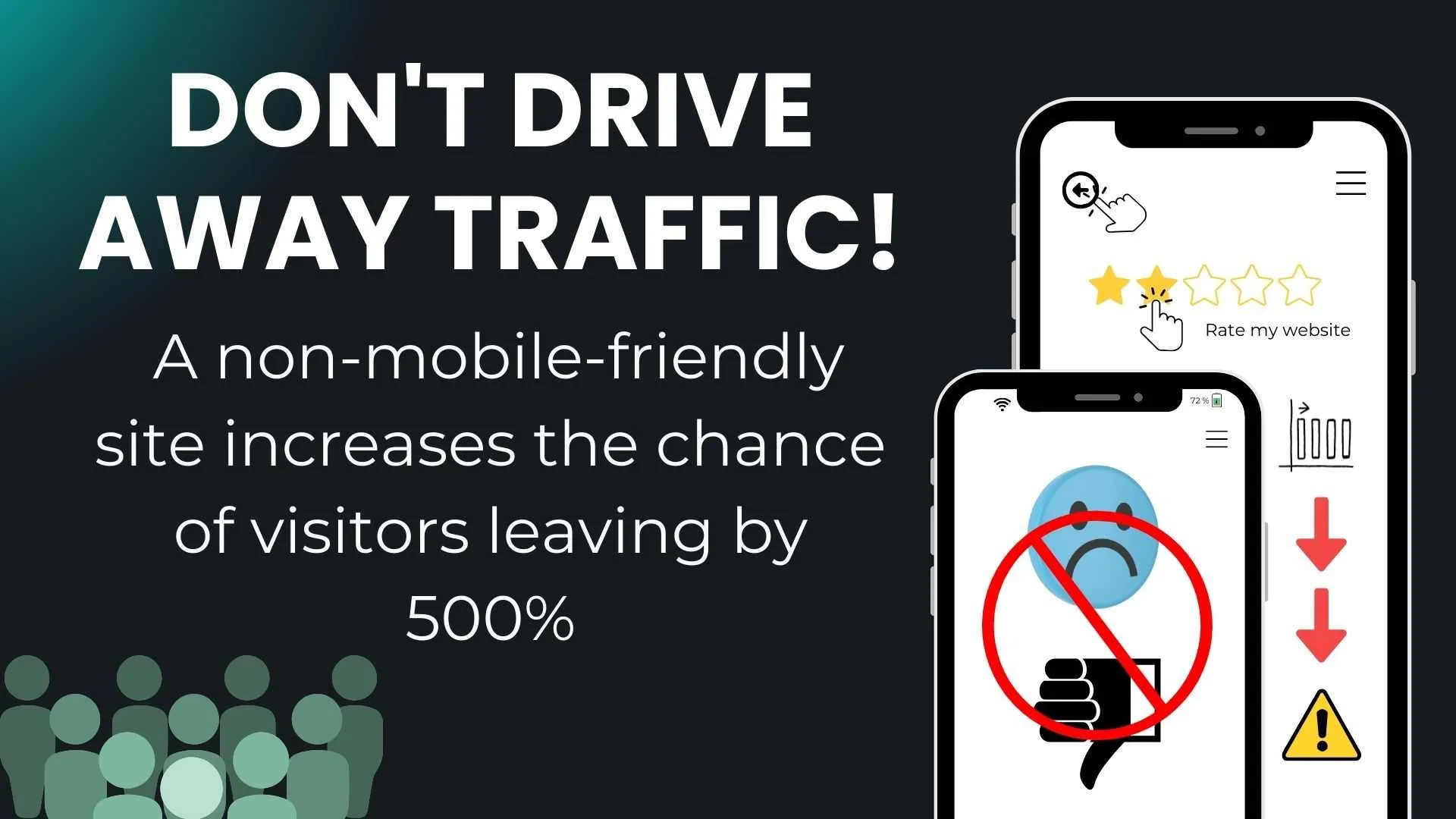
Why Performance Testing is Important?
Imagine launching an app that can't handle peak traffic. Performance testing prevents that nightmare.
It's not just about avoiding crashes. Performance testing environment ensures your software delivers a smooth, responsive experience. 💡 Every time.
Consider online shopping platforms during Black Friday sales. Without performance testing, those sites could crash under heavy traffic. 🛍️
![Ensure your app excels during peak traffic with comprehensive performance testing, from load to stress checks, for a flawless user experience every time.]](https://cdn.prod.website-files.com/64b7ba4dc9375b7b74b2135e/679a022d2d2e4871dacd5d7c_65e98b1c8c240d73139ae629_performance%2520testing%2520blog%25201.webp)
It starts with understanding your user's needs and your software's limits.
There are many types of performance testing: load tests, stress, and scalability. Each uncovers different insights about your software's robustness. 📊
Why performance testing is important becomes clear when you see the fallout from insufficient testing.
Slow, buggy apps lose users. 📉😠
Did you know these Industrial Examples for Performance Testing?
Performance testing scenarios range from everyday use to extreme load conditions, preparing your software for anything. 🌪️
Live Streaming services Like YouTube or Facebook during major events. They use performance testing to ensure no buffering at peak times. 🏆
Performance testing is the unsung hero behind the seamless operation of apps and websites you rely on daily.
Developers can create robust, user-friendly applications that stand the test of time by understanding how to do performance testing. 🛠️
The goal of performance testing is your software's training for the digital Olympics. Without it, you're not ready to compete. 🥇

Did You Know All These Types of Performance Testing?
Let's explore the top 7 performance test types you need to know.
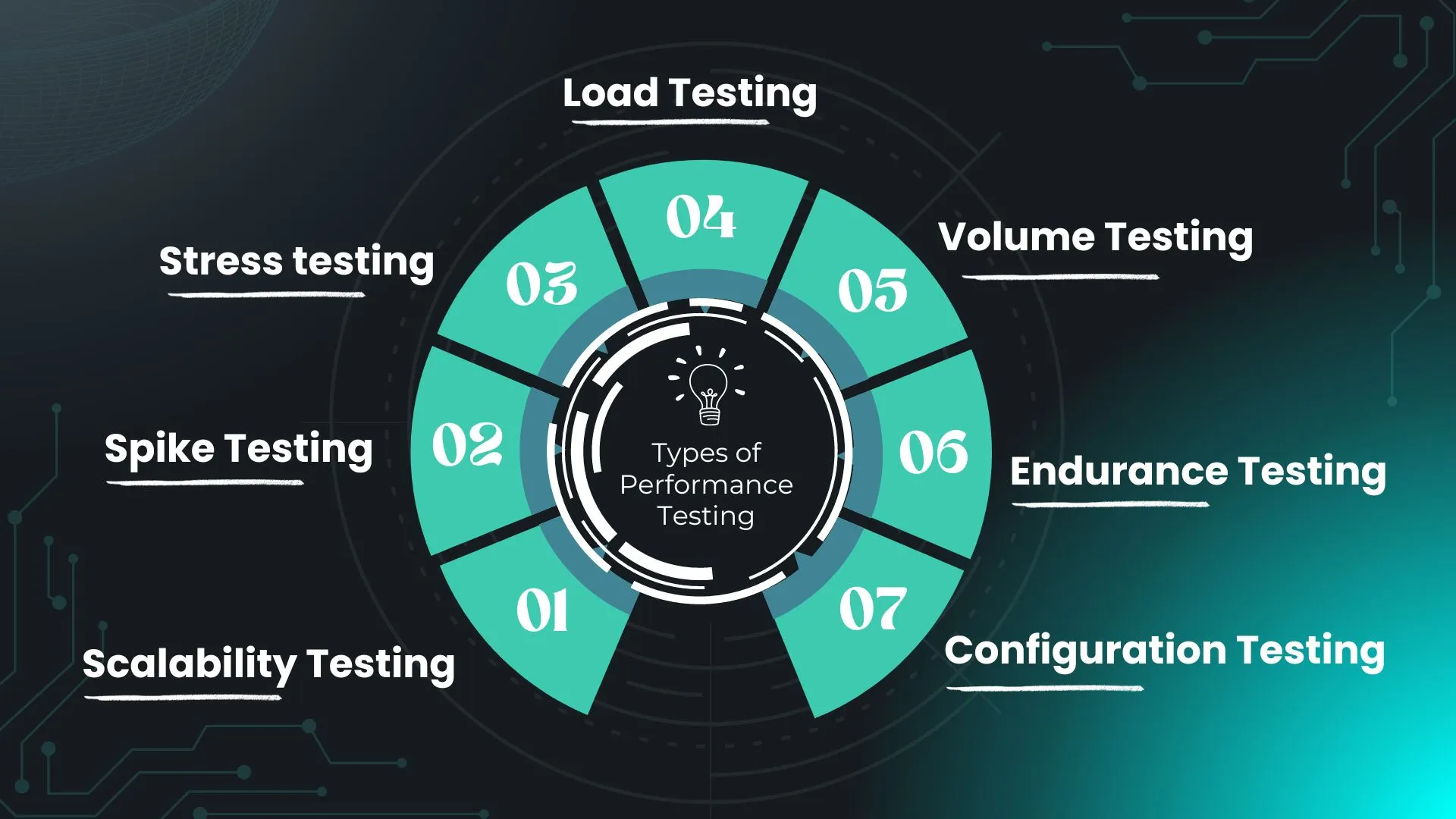
➡ First up, load testing. It's about simulating concurrent users to see how your software handles the pressure. It's like a regular day at the office, seeing if your software can handle the typical customer demand without breaking a sweat.
➡ Stress testing takes it up a notch. Pushing your app to its limits to find its breaking point. The performance goals are to uncover how and where your application falters under extreme pressure, helping you reinforce those weak spots.
➡ Then, there's scalability testing, which determines if your software can grow with your user base. This testing type is about future-proofing your application, ensuring it can scale up gracefully as demand grows. 📈
➡ Don't forget about endurance testing. It's all about ensuring your software can perform well over an extended period of time. This type of testing is crucial for detecting memory leaks or other potential issues regarding memory usage that could degrade performance over time. ⏳
➡ Spike testing is fascinating. t tests your software's reaction to sudden surges in traffic. 📊 Spike tests determine the software's ability to handle the unexpected. It's an essential test for applications that may experience sudden popularity or those used in event-driven scenarios.
➡ Volume testing fills your software with large amounts of data to see if it can still perform. In an age where data is king, ensuring your application can handle large volumes without a dip in performance is non-negotiable. This test helps identify potential bottlenecks in data processing and storage.
➡ Last but not least, configuration testing. Every software testing environment is unique, and this testing type acknowledges that by exploring different configurations. It checks how changes in software settings affect performance.
Performance testing is a type of necessity in the software world. Without it, you're flying blind. Equip your software to excel, and let it soar high, ready for any scenario that comes its way. 🚀
Understanding each type of performance testing empowers you to prepare your software for any scenario.

Is Load Testing Different from Performance Testing?
They're not twins but close siblings in the testing family.
Performance testing is the big picture. It's about evaluating how your software behaves under various scenarios. 🖼️ It's vast and inclusive.
Load testing, though, zooms in on one aspect. It's a type of performance testing that specifically measures performance under expected user loads. 🔍 Precision is key.
Understanding how software behaves under expected user loads is crucial, especially in a production environment where real user interactions occur.
Load Testing Definition and Objectives
So, what does load testing means? It's simulating real-life loads on software to understand how it performs. 🏋️ It's about endurance.
What are the objectives of load testing?
Quite straightforward. To identify performance bottlenecks before they impact users. 🎯 Prevention over cure.
Distinguishing between them is important because, while all load testing falls under the umbrella of performance testing, not all performance testing qualifies as load testing. 🔄 This is a crucial differentiation.
Top 7 Benefits of Performance Testing You Must Recognize.
Why is performance testing important? 🤔 Let's dive into the top 7 benefits spotlighting its value in the software lifecycle.
🚀 Enhances User Satisfaction - A smooth, responsive app keeps users happy and engaged. Performance tests ensure just that. By minimizing lag and improving response times, performance testing directly contributes to a positive virtual user experience, making apps more appealing and user-friendly.
📈Boosts Scalability - It helps you understand how well your application can scale with your user base—planning for this scalability is crucial. This foresight allows for allocating resources and infrastructure improvements to align with projected growth, ensuring the app remains efficient and reliable.
🔍Identifies Bottlenecks - Before concurrent users stumble upon them, performance testing finds and lets you fix those pesky bottlenecks. This proactive approach enhances the user experience and optimizes the application performance issues, contributing to smoother operations and increased efficiency.
🌐Improves Load Handling - Know exactly how much traffic your application can handle before it goes live. No surprises! Understanding this capacity ensures the application remains stable and performs well under peak loads, preventing potential downtime and maintaining user trust.
💸Reduces Costs - Catching common issues early in the performance testing life cycle saves money; fixing them post-launch proves costly. Early detection of performance issues can significantly reduce the need for expensive fixes and mitigate the risk of lost revenue due to app downtime or poor virtual user experience.
🔐Supports Security - It's not just about speed and stability. Performance tests also add a layer to your security measures. By stress testing the application, vulnerabilities can be uncovered and addressed, enhancing the overall security posture of the application against potential attacks.
💡Informs Better Decisions - With detailed performance bottlenecks and insights, make informed decisions about improvements and optimizations. Knowledge is power. This data-driven approach allows for targeted optimizations, ensuring that resources are effectively utilized to enhance app performance and user satisfaction.
Understanding the benefits of performance testing is like unlocking a cheat code for software success and ignoring it. Well, that's not an option if excellence is what you're after. Let's make your app not just functional but phenomenal.
Which Open-Source Performance Testing Tools Are Worth Considering?
Open-source gems shine the brightest in the vast sea of performance testing tools. 🌟 These tools offer robust features without the hefty price tag and foster community-driven innovation. 🌟 Let's dive into the tools that are changing the game.

🟡JMeter - A powerhouse for testing web software applications. With its ability to simulate heavy loads on application servers, networks, or objects to test strength and analyze overall performance under different load types, JMeter is invaluable.
Its versatility extends across various protocol-based tests, including HTTP, HTTPS, and FTP, making it the go-to tool for comprehensive load and performance testing. 🌐

🟡Gatling - For those who love efficiency, Gatling offers high-performance testing with elegant reports. It’s ascendancy lies in its detailed, visually appealing reports that make interpreting data a breeze.
Designed for testing the web and APIs, Gatling is a favorite for those who prioritize efficiency and clarity in their performance testing results. 📊

🟡Locust - Locust lets you write tests in Python, making it flexible for complex scenarios. Locust's Python-based scripting environment before execution allows you to define user behavior with intuitive code rather than through a UI, making it a powerhouse for testing complex user scenarios.
Its lightweight, scalable nature makes it perfect for developers who write and execute tests that mimic thousands or millions of simultaneous users. 🐍
🟡Taurus - It acts as a front-end to other performance testing tools like JMeter, Gatling, and Selenium, allowing you to run tests written for these common tools under a unified, simplified interface.
Taurus shines by streamlining the test development process, making it accessible for newcomers while still powerful for seasoned pros. 🛠️
🟡K6 - Emphasizing scriptability and automation, K6 allows developers to write tests in JavaScript, offering a familiar environment that integrates seamlessly into CI/CD pipelines.
Its focus on developer experience and operational simplicity makes K6 stand out for operations teams adopting DevOps practices. 👨💻
🟡Apache Bench (ab) - For quick and dirty testing, ab gives you the essentials to test your HTTP server's performance. It's straightforward, command-line-based, and provides essential metrics that help you understand your server's capacity and responsiveness.
Apache Bench is perfect for quick assessments, offering a fast track to performance insights. 💨
🟡LoadRunner Community Edition - Not entirely open-source, but free to use. It's robust for more comprehensive testing needs. It's a behemoth in the field, equipped to precisely handle the most demanding testing scenarios.
These tools are chosen because they embody what performance testing tools require: flexibility, power, and no cost. Plus, there's something for every scenario, from the web to mobile apps. 📱
Choosing the best tools for performance testing means considering your project's specific needs. These open-source tools offer a great starting point. Explore, experiment, and elevate your testing game. Remember, the right tool can make all the difference in your quest for performance excellence.
Gain Insight into These Best Performance Testing Frameworks to Improve Your Applications
In the world of software, speed and reliability are kings. That's where performance testing frameworks come into play. 🏰
Selenium shines for functional testing and as a cornerstone for performance tests. It enables automation of browser actions to simulate real user scenarios, making it invaluable for ensuring your web and mobile applications perform flawlessly under various conditions. 🌐
Traditionally seen as a tool, JMeter excels as a framework when customized for specific performance testing scenarios. Its versatility in load-testing web applications is unmatched, providing deep insights into how your applications behave under stress. 🛠️
BlazeMeter extends the capabilities of JMeter, integrating advanced features such as cloud testing and real-time reporting. Its compatibility with JMeter and its enhanced features position it uniquely as a framework for comprehensive performance analysis. 🌩️
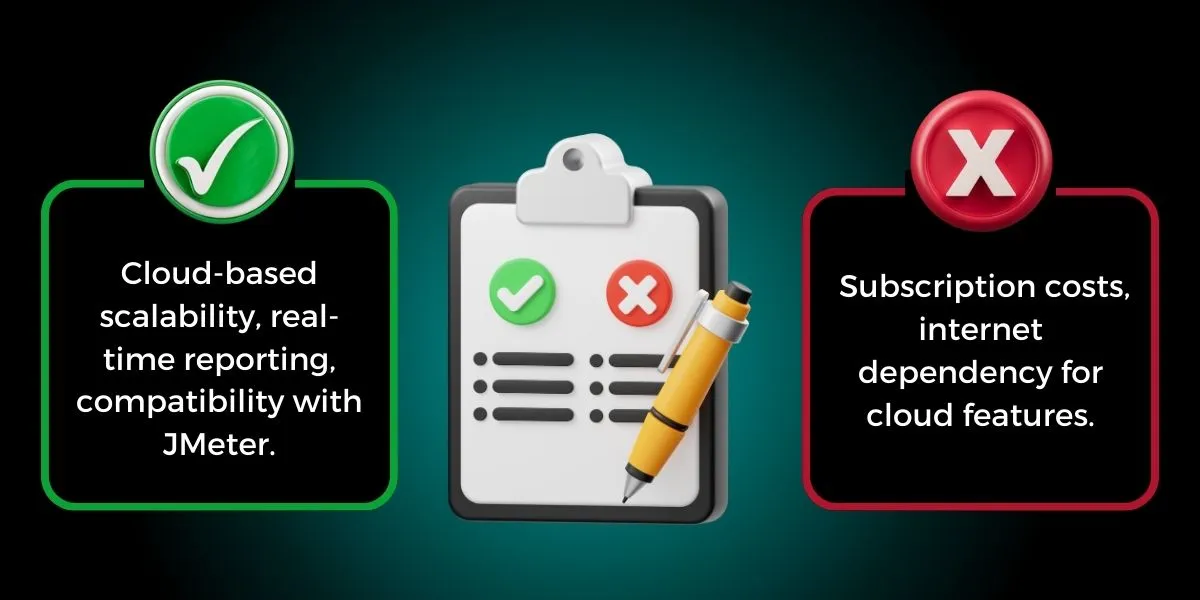
Selecting the right performance test framework is pivotal. Each framework offers unique strengths, catering to diverse testing needs and skill levels. Choosing wisely can significantly boost your application's speed, reliability, and scalability. 🚀
Exploring these frameworks, you'll discover valuable insights that can dramatically improve your application's performance, ensuring it functions and excels. Remember, a carefully chosen performance testing framework is more than a tool—it's a strategic partner in crafting exceptional user experiences. Let's elevate your applications from functional to phenomenal. 🌻
Conclusion
Performance and load testing transcend the realm of mere formalities in the expansive universe of application software development; they are the bedrock of a robust, resilient application. 🚀
Throughout this exploratory journey, we've peeled back the layers of performance engineering, moving beyond the surface to unearth the fundamental principles and spotlight the most efficient frameworks of 2024. 📚
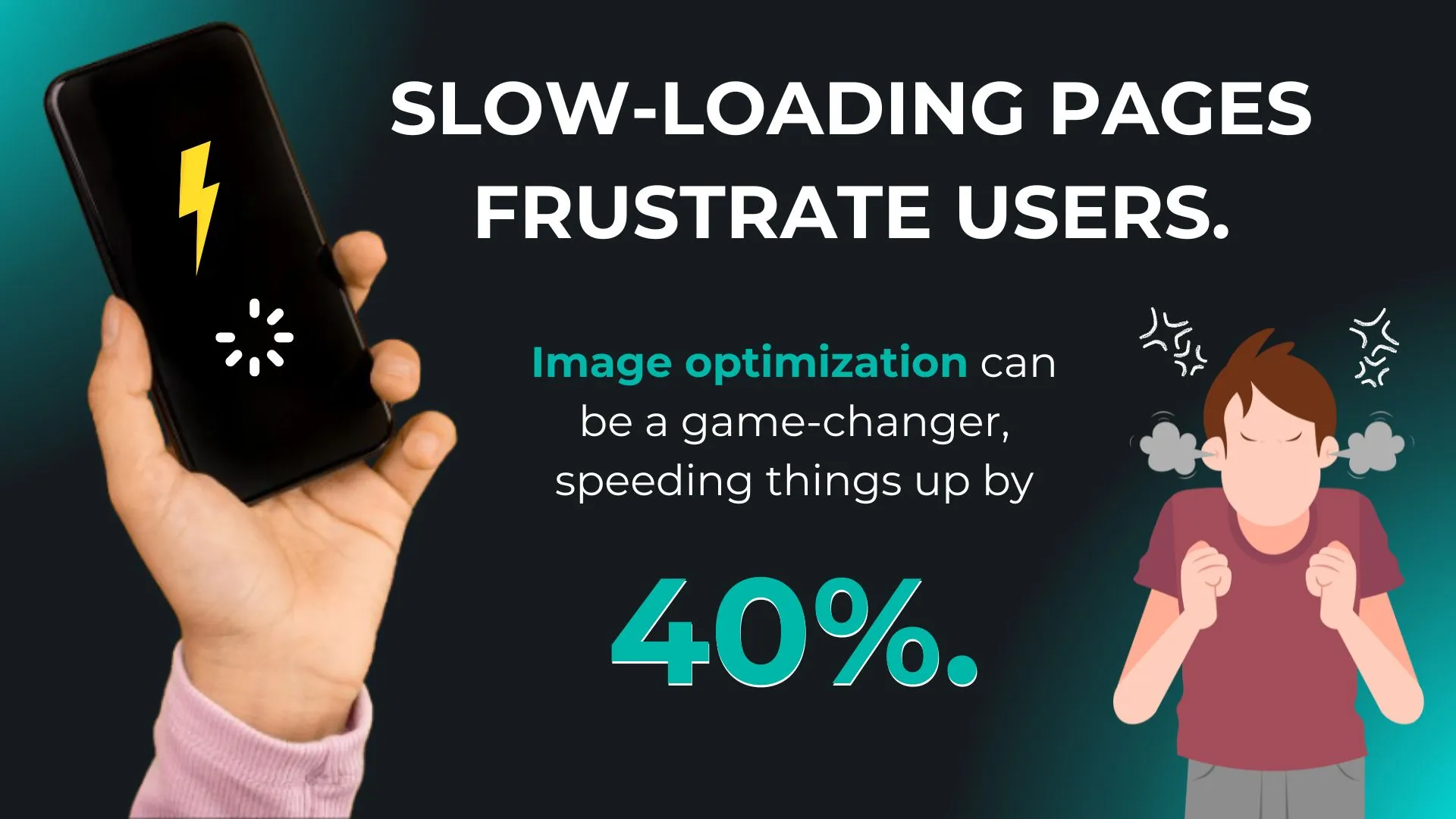
The lifeline of any application lies in its ability to withstand the storm of real-world usage without breaking stride. It’s what separates the fleeting from the perennial in the digital ecosystem. 🌪️
Diving into performance testing isn’t just recommended; it’s imperative. And where better to embark on this mission than with Frugal Testing? 💡
Frugal Testing paves the way for a new era of performance testing, demystifying the performance testing process with its user-friendly, budget-friendly approach. It's about making sophisticated testing accessible and ensuring your application’s performance is tested and proven resilient. 🛫
The sky’s not just the limit—it’s the starting point. 🌈

Find More Answers related to Functional Testing
What are performance testing metrics?
Essential metrics like response time, throughput, and error rate are critical for understanding an app's efficiency. These metrics help compute performance bottlenecks and optimize positive user experience.
What are performance testing objectives?
The goal is to ensure that applications deliver seamless operation under anticipated user loads, boosting user satisfaction and ensuring system stability.
Is performance testing non-functional?
Absolutely. It evaluates the system's operation rather than its features, focusing on its capacity to endure stress and maintain performance.
Is performance testing manual or automated?
It's a blend of both. Manual testing provides unique insights, whereas automated testing streamlines the generic process for consistency and efficiency.
How to learn performance testing?
Kickstart your journey with online tutorials and open-source tools. Hands-on practice on real-world projects accelerates learning. Embrace continuous testing improvement for mastery.



.webp)

%201.webp)
